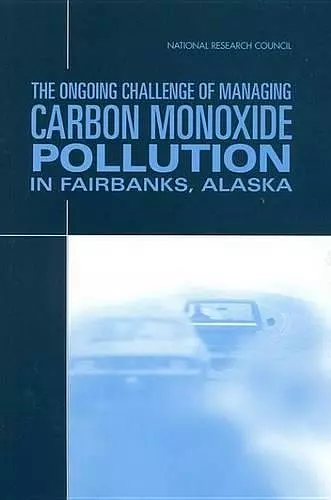The Ongoing Challenge of Managing Carbon Monoxide Pollution in Fairbanks, Alaska
Interim Report
National Research Council author Board on Environmental Studies and Toxicology author Division on Earth and Life Studies author Board on Atmospheric Sciences and Climate author Transportation Research Board author Committee on Carbon Monoxide Episodes in Meteorological and Topographical Problem Areas author
Format:Paperback
Publisher:National Academies Press
Published:22nd Sep '02
Should be back in stock very soon

Carbon monoxide (CO) is a toxic air pollutant produced largely from vehicle emissions. Breathing CO at high concentrations leads to reduced oxygen transport by hemoglobin, which has health effects that include impaired reaction timing, headaches, lightheadedness, nausea, vomiting, weakness, clouding of consciousness, coma, and, at high enough concentrations and long enough exposure, death. In recognition of those health effects, the U.S. Environmental Protection Agency (EPA), as directed by the Clean Air Act, established the health-based National Ambient Air Quality Standards (NAAQS) for CO in 1971.
Most areas that were previously designated as "nonattainment" areas have come into compliance with the NAAQS for CO, but some locations still have difficulty in attaining the CO standards. Those locations tend to have topographical or meteorological characteristics that exacerbate pollution. In view of the challenges posed for some areas to attain compliance with the NAAQS for CO, congress asked the National Research Council to investigate the problem of CO in areas with meteorological and topographical problems. This interim report deals specifically with Fairbanks, Alaska. Fairbanks was chosen as a case study because its meteorological and topographical characteristics make it susceptible to severe winter inversions that trap CO and other pollutants at ground level.
Table of Contents- Front Matter
- Summary
- 1 Sources and Effects of Carbon Monoxide Emissions
- 2 Fairbanks Case Study
- 3 Implications of the Fairbanks Case Study
- References
- Glossary
- Appendix: Biographical Information on the Committee on Carbon Monoxide Episodes in Meteorological and Topographical Problem Areas <
ISBN: 9780309084840
Dimensions: unknown
Weight: unknown
154 pages